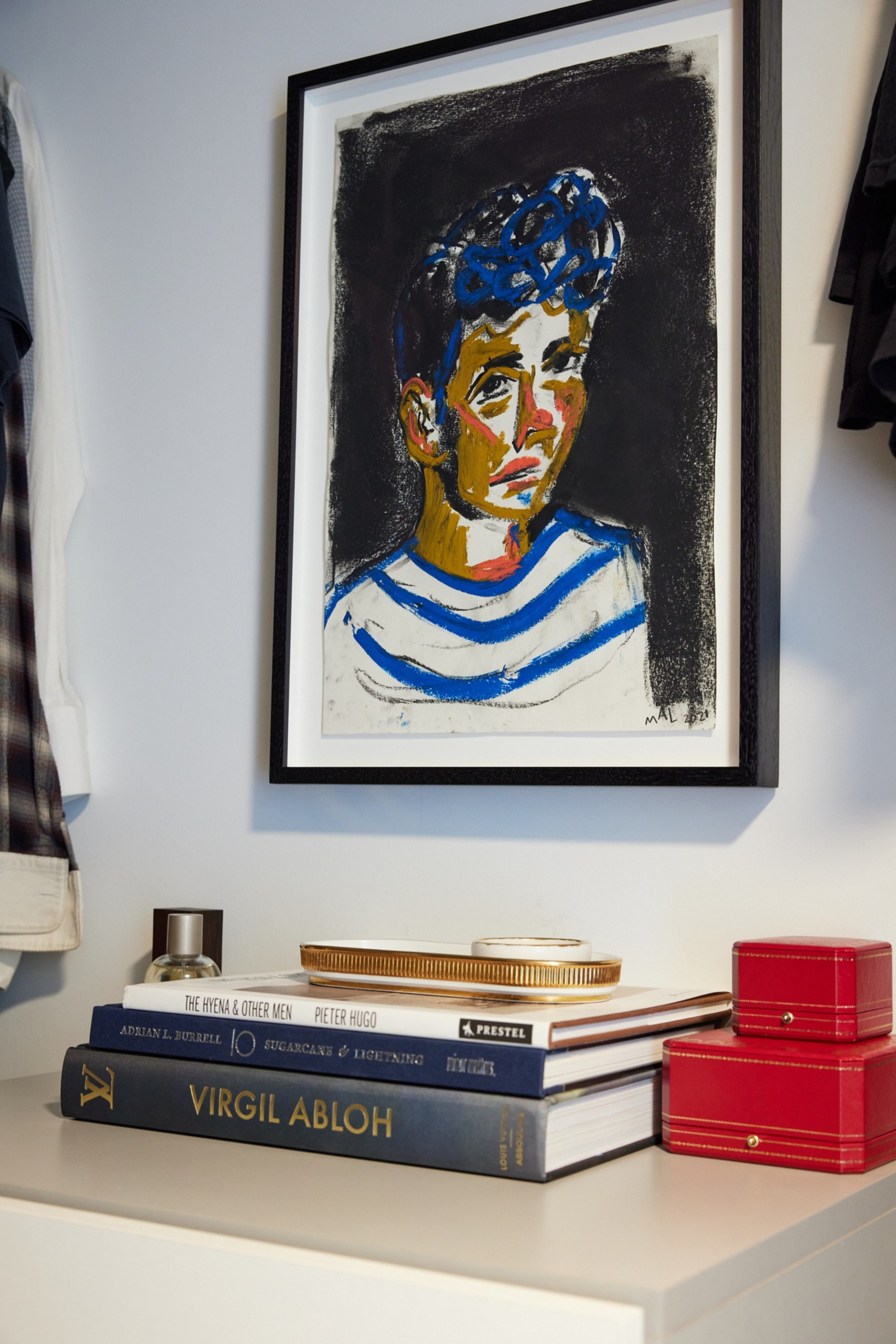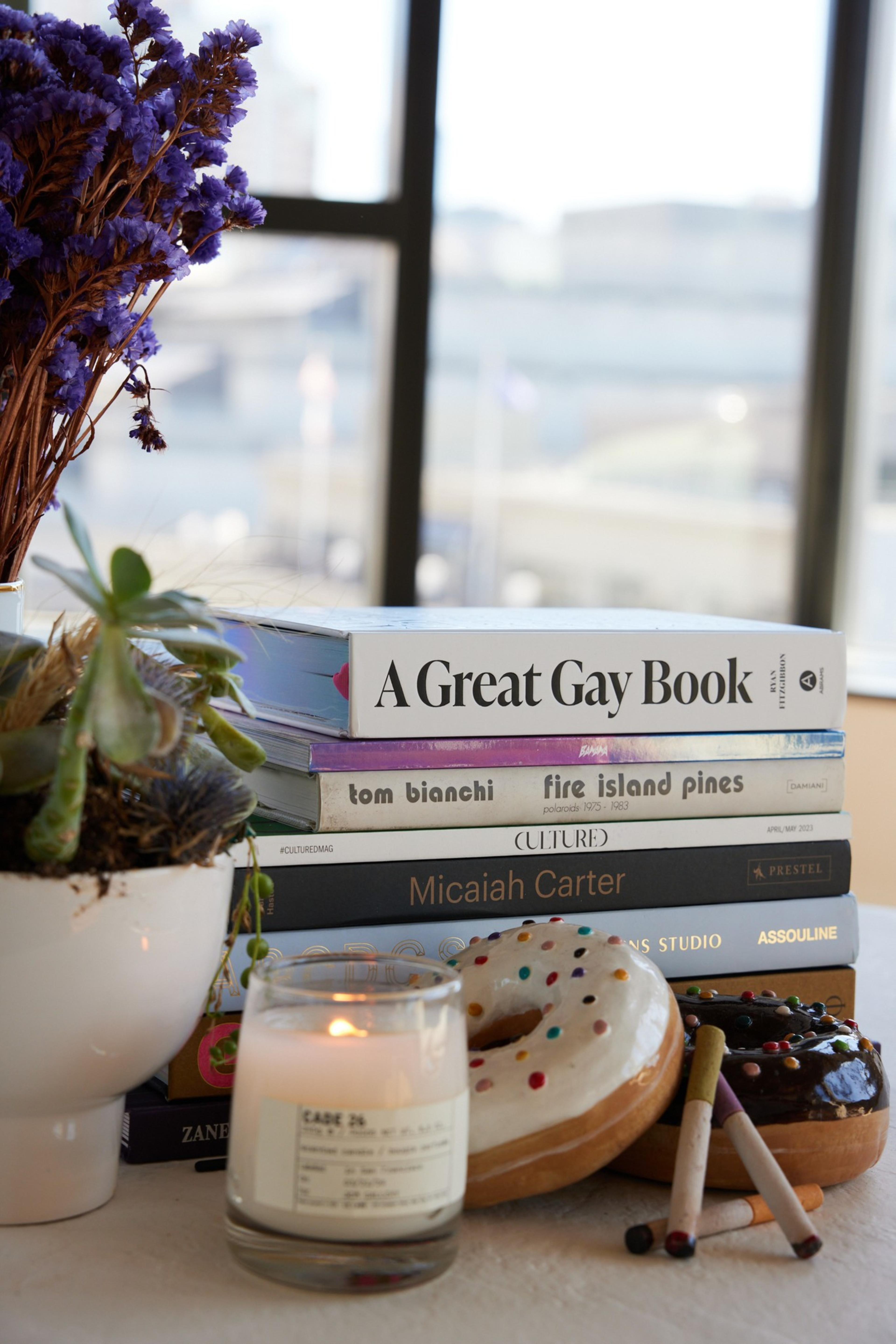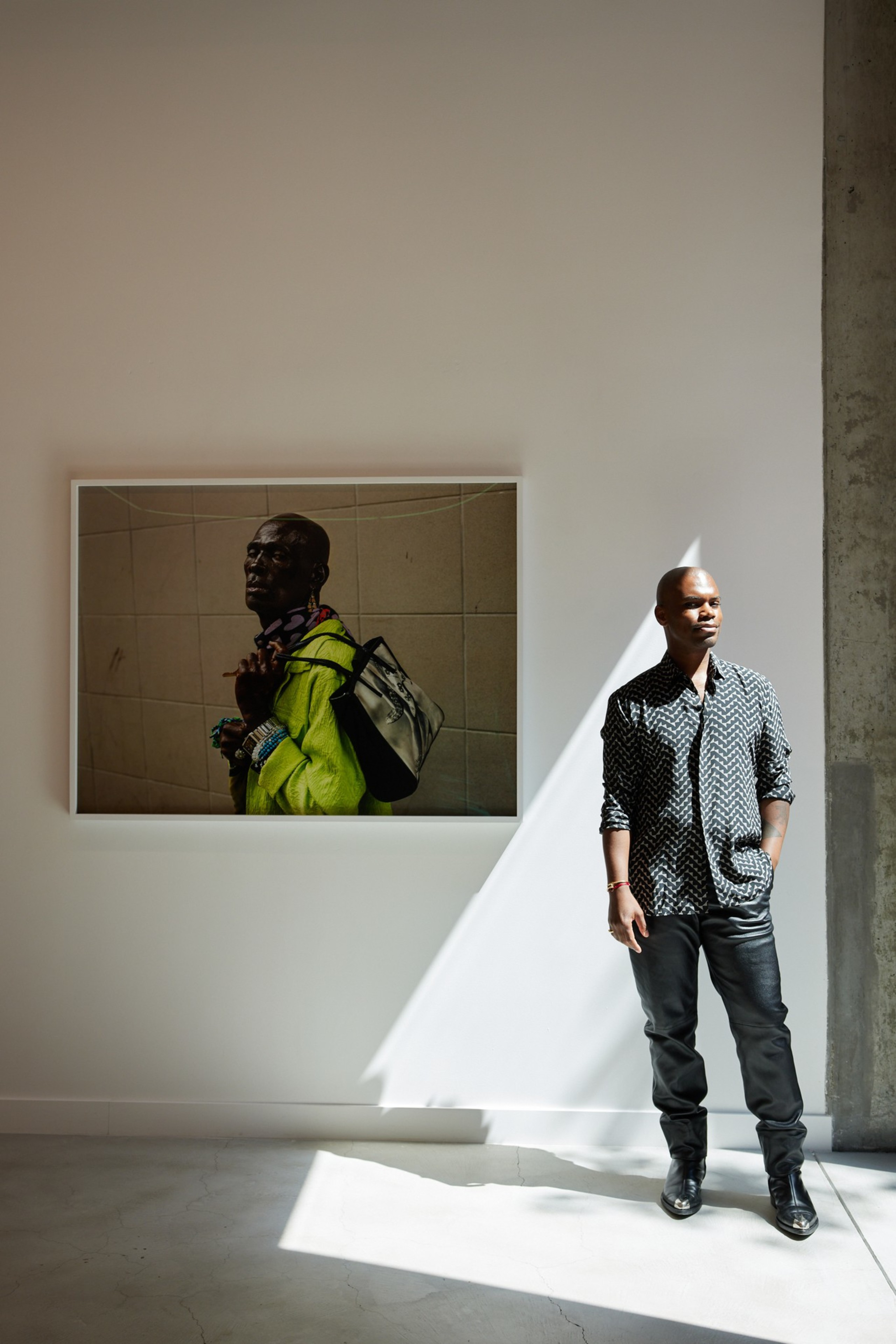This is The Looker, a column about design and style from San Francisco Standard editor-at-large Erin Feher.
As a college student in Washington, D.C., Jonathan Carver Moore worked weekends as a sales associate at Barneys department store. He noticed that some of his coworkers would slyly avoid helping women who weren’t a slender size 2, judging (wrongly) that skinnier women spend more. Moore took the opposite approach.
“They could be size 8, 10, 12, 14, or bigger — I could always make things work,” he recalls. “I figured, I’ve gotta be here anyway, and I’m only making $8.50 an hour, so I might as well have fun and dress the hell out of these women.”
Soon, Moore was the store’s top salesperson, with a fan club of shoppers who would come in and spend only when he was on the floor. His secret was simple, and he has stuck with it. “They felt like they were seen. That is something that’s still very important to me when it comes to the art world: I want everyone who walks through the door to have that feeling.”
Today that door has his name on it. The Jonathan Carver Moore Gallery (opens in new tab) opened in March 2023 on Market Street between 5th and 6th, and in the short time since, he has made his distinctive mark on the Bay Area art scene and beyond. As San Francisco’s first openly gay Black male gallerist, he designed his programming around underrepresented and marginalized artists. And in doing so, he has provided a gust of fresh air to the downtown art scene.


In addition to curating 11 (and counting) gallery shows, Moore this summer launched an artist-in-residency program: He invited Ghanaian painter Aplerh-Doku Borlabi (opens in new tab) to set up shop on Mid-Market for seven weeks, making art in a 2,600-square-foot empty commercial space next to the gallery and living a few stories above it — just as Moore himself does.
Indeed, in a modern fairytale version of “living above the shop,” Moore and his husband occupy a light-drenched corner unit on the 11th floor of Serif (opens in new tab), a new condo complex above the gallery and next door to fashionable hotel the Line. The palette of white walls and textured concrete give visual breathing room to the home’s real stars: the art and the views. The building’s flatiron design results in a dramatic bullnose of a main living space, wrapped in glass like a luxury, double-height cockpit.
The 12-story building on the corner of Market and Turk has a dream team of designers behind it. The modern flatiron concept was a collaboration between the famed Bjarke Ingels Group of Denmark and San Francisco’s Handel Architects. The clean and contemporary interiors of the units and the angular public spaces are by SF’s own IwamotoScott.
The art in the apartment is a director’s cut of the shows that have passed through the Jonathan Carver Moore Gallery gallery, with Moore aiming to personally acquire at least one piece from each exhibit he mounts. His favorites line the hallways, fill the small slivers of wall separating the windows, and even hang in the bathrooms and walk-in closet.
He has collected so voraciously that he admits with embarrassment that a painting by Kehinde Wiley remains rolled up in a closet next to his impressive shoe collection. The works on display include everything from neon (a work by Patrick Martinez) to glitter (David Huffman) to an oversize Pet Shop Boys cassette-tape sculpture (Lucky Rapp, an eclectic anniversary present for Moore’s synth-pop loving husband).


Moore’s love of art was sparked and tended by his mother. His father was in the U.S. Air Force, a career that kept the family on the move, and Moore did stints as a child in Paris, Hawaii, the Philippines, and countless other locales, many foggy in his memory. Regardless of the location, his mother insisted on frequent museum trips, and stays with his grandparents in Washington D.C. included repeat visits to the city’s collection of stellar (and free) art institutions.
Moore settled in D.C. for college, eventually earning a masters in public relations while honing his people skills — and paying his bills — at Barneys. California was at the top of the destination list after graduation. With a cluster of friends in San Francisco, he applied to nonprofits in the Bay, landing a PR job at an LGBTQ advocacy organization. His starter rental was at Golden Gate and Larkin streets, and while he has hopped apartments a handful of times, he has never left the boundaries of the Tenderloin.
But while he has stayed rooted geographically, professionally he has undergone an extreme makeover. In 2019, he was on staff at the Rosenberg Foundation, a nonprofit that focuses on economic, racial, and criminal justice in the state. He was aligned with the cause but not with the aesthetics.
“We had an $80 million foundation, and the office looked like shit,” says Moore. He took his complaints directly to his boss, telling him, “I understand we’re a nonprofit, but we don’t have to look like this. We have blue carpet. There is nothing on the walls.”
In response, his boss offered him the unofficial position of office curator. There would be no pay or title bump, but he had carte blanche to invest in art for the space.
Moore was giddy. From the moment he moved to San Francisco, he had immersed himself in the art scene as a spectator. “I spent a lot of time going to gallery openings and open studios with artists. I built my artist community naturally, just because I love to look at art.”



He suddenly found himself in a position to actively support the artists he admired. But more than a buying spree, he was engaged in an educational quest, digging into art terminology, history, and the work of established and emerging artists.
He started an anonymous Instagram account, Artucated (opens in new tab), filled with straightforward and accessible explanations of oft-heard jargon paired with scroll-stopping artworks. He also posted short introductions to his favorite artists — many of whom he had just discovered. The feed was addictive and intellectually nourishing at the same time.
Armed with this new knowledge, he scooted closer to the art world professionally, taking a job at the nascent Institute of Contemporary Art San Francisco (soon relocating downtown). He also started taking bigger swings with Artucated, reaching out to established artists for interviews.
After being knocked out by a photograph by South African artist Zanele Muholi (opens in new tab), who closed an expansive 100-piece show at SFMOMA in August, Moore felt they should connect: “Seeing that image, that was the first time I felt like I saw a person like me: a Black person, someone as dark as me, a queer person.”
Moore reached out across continents, asking Muholi for an interview. To his surprise, the artist agreed. After that, the two spoke every day during lockdown.
A few years later, at Muholi’s birthday celebration, the artist took Moore aside and urged him to quit his job and start that gallery he had been talking about. Less than six months later, in March 2023, Jonathan Carver Moore opened its doors.


This week, Moore celebrates the opening of his 11th exhibition, “California Wildflowers” (opens in new tab) by world-renowned South African photographer Pieter Hugo, who in 2014 took portraits of people he met on the streets of the Tenderloin while he was here for a residency at the Headlands Center for the Arts. The show officially opens Thursday, but the anticipation has been bubbling all week, with a sneak peek at Mid-Market’s inaugural “first Thursday” event and a talk with the artist Wednesday at the Tenderloin Museum (opens in new tab).
When he looks at the portraits of people from whom others might shy away, Moore sees all the possibilities for connection. Just like he once did as a clerk in a department store.
“These are my neighbors,” he says, looking around his gallery. “I find beauty and commonality and community in everyone that I see around me.”
